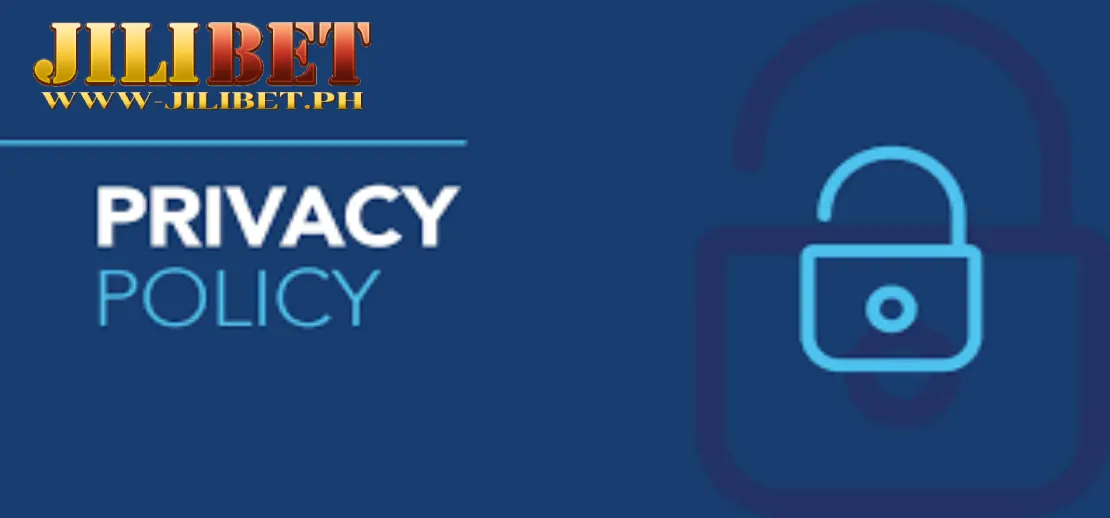Privacy Policy – Jilibet Casino
The Privacy Policy is an important paper that explains how the company will collect, utilize, retain and save the personal information of a user. Fostering trust among users requires a strong track record of Privacy in today’s digital world.
Understanding Jilibet Privacy Policy
Jilibet Privacy Policy, full explanation of what Jilibet does with the data collected. It lays it all out in an easy to read manner, making data transparency something that is easy for the user to understand and ultimately take control of.

Scope of the Jilibet Privacy Policy
This Privacy Policy applies to all visitors and users of Jilibet’s products and services, including any website or mobile application operated by the Company as well as any other digital platforms or interactions with our company. It describes the types of personal information collected, for what purposes it is used, and how they work to protect user data in relation to privacy and security.
Key Elements of the Jilibet Privacy Policy
There are a few important highlights in the Jilibet Privacy Policy which is:
- Collection of Personal Information: The policy goes on to explain what personal information Jilibet collects, which includes your name, email address, contact details, payment information and any other piece of information you use when interacting with the company.
- Use of Information: The policy provides that Jilibet uses personal information for service provision, account administration, customer support, and personalization in addition to other lawful business purposes.
- Sharing and Disclosure of Data: The policy describes the situations in which Jilibet may share or disclose user data, including to third-party service providers and affiliates, or in response to legal obligations.
- Data Security and Protection: Here the policy also discusses, in detail, what measures Jilibet takes to protect data that is secured through encryption, access controls, and other security practices to prevent unauthorized access.
- User Rights and Choices: The policy lets users know what rights they have to access, correct, or delete their personal information; it also tells users about the options for how their data is used.
- Retention/Deletion of Data: This requires an explanation on how long Jilibet Store user data, and when does it delete or anonymize them, after they are unwanted.
- Updates and Changes: You will be notified of the new changes that were made to this Privacy Policy by our policy in Jilibet so you can always share what data, about you, is collected for what purposes.
Through these elements, Jilibet Privacy Policy seeks to provide users a transparent and identifiable approach regarding how it handles their personal data which would strengthen the trust between user side while engaged with any product or service that is being offered by Jilibet.
Importance of a Comprehensive Privacy Policy
Every organization which collects and processes personal data, needs to have a proper Privacy Policy. This is one of the most important steps for helping people trust you with their data and show your respect towards privacy. Some critical reasons why an exhaustive Privacy Policy is needed are:
Regulatory Compliance
Making sure the storage of confidential information obeys to strict laws, like General Data Protection Regulation (GDPR) in the European Union or California Consumer Privacy Act (CCRA) in the United States, etc. A detailed Privacy Policy can help these organizations establish compliance with the legal requirements, cutting down their risk of fines, penalties and bad reputation coming against them.
Transparency and Trust
Having a clear and transparent Privacy Policy, shows your users that you care about their privacy and that you are willing to be upfront about how you use their personal information. It will increase trust, developing customer share and differentiating your brand amongst competitors who may not prioritize privacy to the same degree.
User Control and Empowerment
A well crafted Privacy Policy not only enhances corporate credibility among the myriad other benefits, but also empowers users and educates them about their rights and choices concerning how personal information should be used. For example, being able to learn about, update, delete information about them or opt out of certain data processing. Enabling users to offer more data control, improves their satisfaction and fidelity towards your platform.
Risk Mitigation
A detailed Privacy Policy can help minimize risks regarding data privacy and security like some of the biggest threats are data breaches, unauthorized access or misuse of personal information. Providing a clear explanation of your data practices and security processes can both help to mitigate these events from happening while showing you have implemented action to guard user data.
Competitive Advantage
Privacy can be touchy business, but in the world today of data privacy being a continued hot topic. your related chat has taken center stage through legislative reform- is one commitment that speaks volumes. From an end user perspective, data privacy is also becoming increasingly important and adding a comprehensive Privacy Policy to our site can improve their opinions about that specific company.
Legal and Contractual Obligations
This means that many business agreements and partnerships will require you to have a solid Privacy Policy. By providing a clear policy, you allow yourself to not only be compliant with the legislation but also make this required collaboration work and ensure that services are still available.
An elaborate Privacy Policy enables trust, compliance with regulations, reduced risks and better user experiences for the long-term prosperity of your organization. m
Examples of Effective Privacy Policies
In order to make the key areas of an ideal Privacy Policy more clear, here are some examples from industry leaders that have done a great job implementing stringent data privacy practices.
Example 1: Google Privacy Policy .
The Google Privacy Policy is a good example of a detailed, human readable document that describes how the company uses personal information. Key features include:
- Explicit data Collection: It will define what kind of data it collects such as search history, location and how the date people are collecting enhance our services.
- Usage transparency: The policy explains how user data is used for personalization, ads and other business reasons, and describes the benefits and risks of such use.
- User Control: Provides users with ability to edit privacy settings, download data or delete accounts.
- Security Measures: Describes strong practices to secure user data e.g. encryption and access controls.
- Clarification on Data Sharing Policy : The policy elaborates on under what circumstances the data of users may be shared with third parties including but not limited to service providers or authorities.
Example 2: Apple Privacy Policy
The Apple Privacy Policy is designed to put users first and limit data extraction key features include:
- Data Minimization: Apple only collects user data necessary to preserve privacy
- The most concerning part comes on the third page in a bullet point that states. “Encryption and Anonymization”: This use of end to end encryption and anonymization to protect user data even from Apple.”
- Data Usage Visibility: This is where the user information gets used to suggest personalized recommendations, purchase etc. and others services.
- User Rights: Users have control over their data right to access, update, to be forgotten and opt-out of various processing.
- Privacy First: Reaffirms Apples unwavering commitment to privacy as a fundamental value of the company
Example 3: Spotify Privacy Policy Overview
Spotify claims to have a user friendly, consumer empowerment form of privacy policy that makes its data practices obvious. Key features include:
- Prioritized Style : The policy is first briefly summarized, then detailed using separate sections which makes navigation easy.
- Plain Writing: This type of language explains the topic in everyday words avoiding high-level technical terminologies helping all users.
- Contextual Insights: Instead of data processing, it provides the context on why and how the data is processed.
- Examples from the real world: concrete illustrations of how user data is used, eg personal music recommendations.
- Multilingual: This is offered in more than one language to reach more people.
The above elements show that creating a Privacy Policy is transparency, user control, data security and commitment to privacy. By addressing these examples and following the suggested best practices, organizations can build holistic policies that drive trust, enforce compliance, and enhance the user experience.
Conclusion
A Privacy Policy is essential for any organization that processes personal data. Building confidence by being compliant, increasing user power and minimizing the risk of data privacy.
The Privacy Policies of the top organizations suggest that more than legal compliance is needed for success, with an emphasis on how to interpret effective practices. The data practice comprises data practices, transparency of the system, user control, and proactive measures for the entitlement of data protection.
In the ever evolving world of stricter data privacy expectations from users, companies who center their efforts in creating full and clean Privacy Policies will both deepen user trust and differentiate themselves in a competitive market to remain relevant over time.

